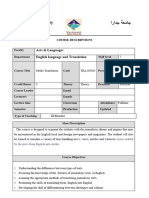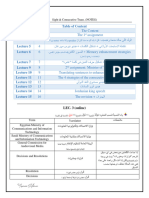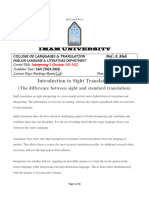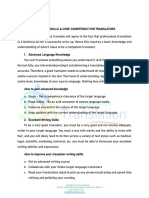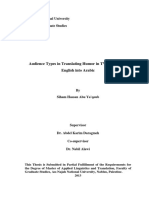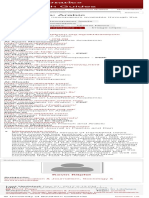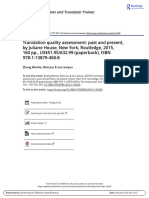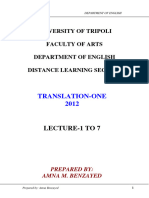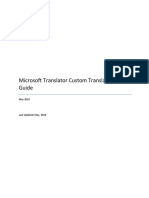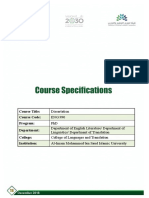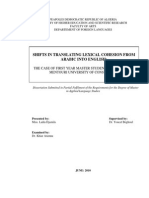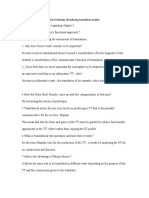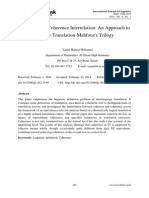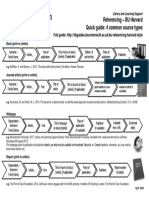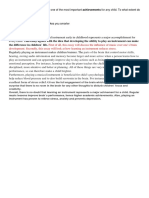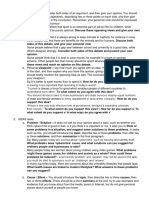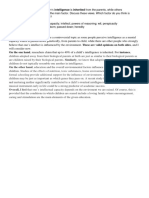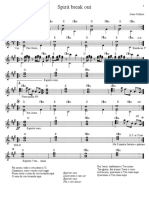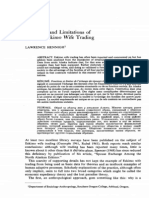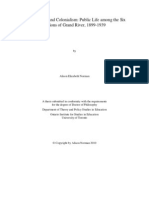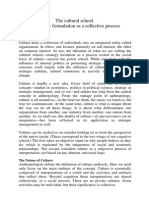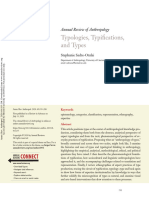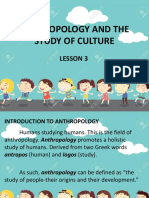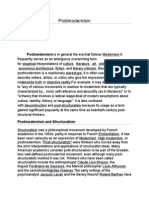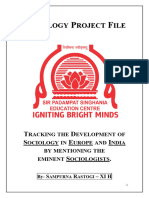CULTURE = unavoidable issue: how it is encapsulated in language?
Experience of cultures => Intercultural competence / AWARENESS [ the translator must be AWARE of
this complex phenomena: Power Differentials between cultures/genders]
Culture => classification of cultura terms according to 5 major fields:
Ecology.
Social culture.
Material culture.
Linguistic culture.
Ideological culture.
Translations / Crossing of cultural borders => LOSS
1. Collocations
2. False Friends
3. Idiomatic cultural set phrases
Language is embedded in culture! => Cultural Bias: text cannot be analysed outside socio-cultural
context => Linguisitic / Cultural MEDIATION
CULTURE = totality of knowledge, proficiency and perception => immediate connection with actions
and events [ all socially conditioned aspects of human life]; dependent on textual norms / conventions
Cultural issues are linked with textual features of
SITUATIONALITY [ of the ST]
ACCEPTABILITY [ of the TT]
Translator`s context-sensitivity is linked to the socio-cultural frame that must be adopted to fulfill the
DESIDERATUM
Translation = culture-specific + culture-universal components
Culture [= total conventions of society] is bound to translation => translation context-sensitive ; =
CULTURE-sensitive
Goals Communication => Text functions => Specific text-types !!! Text-type conventions universal; =
linked to certain culture / time
2 social task of translator
1. SKOPOS = intended communicative meaning be achieved
2. Literary function: enriching the target culture with new perspectives of meaning
Cultural shock : tendency to project own cultural frame of reference onto the foreign culture
Thematization: using the filter of one`s native culture
Cultural transposition = translation strategy varies between EXOCITISM [ minimal adaptation] and
CULTURAL TRANSPLANTATION [ naturalisation of foreign culture]
Tehniques for coping with culture-specific items [CSI] and texts in translation
CSI => translation problem [ when the specific item is nonexistent / different in the culture of TT]
1. CONSERVATION achieved in several ways
a. Repetition / loan transfer / cultural borrowing E.g: Mississipi is rendered as such in Ro
b. Slight ortographic adaptation: Charles Carol, Marseilles Marsilia
c. Linguistic [ non-cultural] translation
d. Extratextual gloss: footnotes, endnotes, glossary
e. Intratextual gloss: info is part of the text: Voronet the monastery of Voronet
2. SUBSTITUTION in various forms
a. Partial Synonymy: The pub was crowded that evening Localul a fost aglomerat in seara
aia
b. Limited universalization: culture meaning is too obscure, but there is another to replace it
in the ST: an American football [ a ball of rugby] o minge de rugby
c. Absolute universalisation foreign connotation is deleted and a neutral reference is
prefered: tuica [plum] brandy
�d. Naturalism replacement of the specific item from the ST with a TT specific item:
dollar-leu / Dacia Renault
e. Deletion when specific item is unacceptable / too obscure for translator to know it
f. Autonomous creation adding of a non-existent item in ST
Translators mat translate CSI one way rather than another due to EXPLANATORY VARIABLES:
1. Supratextual included
a. Linguistic prescriptivism [ when an institution in TC is in charge of preserving
linguistic/stylistic conventions]
b. Nature/Expectations of readers [ when you know they belong to a specialised group you
can anticipate their expectations]
c. Nature / Aims of initiators [ publishers, editors, proofreaders]
d. Working conditions, training, social status of translator
2. Textual
a. Material textual constraints [ an image accompanying the text clarifies the meaning of
CSI]
b. Previous translations
c. Canonisation [ is the text is or not classic changes the translator`s attitude towards the
source
3. Intratextual function of CSI in ST
a. Cultural considerations [ technicalities, references to other cultural minorities you have to
done with]
b. Relevance of CSI [ the more central, the bigger tendency to preserve it]
c. Coherence of TT [ using the same strategy whenever the term occurs]
Groups translation strategies:
1. SC-bound [ ideological reasons] a new text-type is introduced into culture B
2. TC-oriented translations: culture modifies the ST
3. Hybrid texts: compromise between cultures [ e.g European Community / Parliament]
4. International texts: when cultures resists changes
SOCIOLINGUISTICS
Language depends on the social situation of the speaker and the relation with the audicence is addressing.
SL => linguistic insights that help with specific aspects of translation














